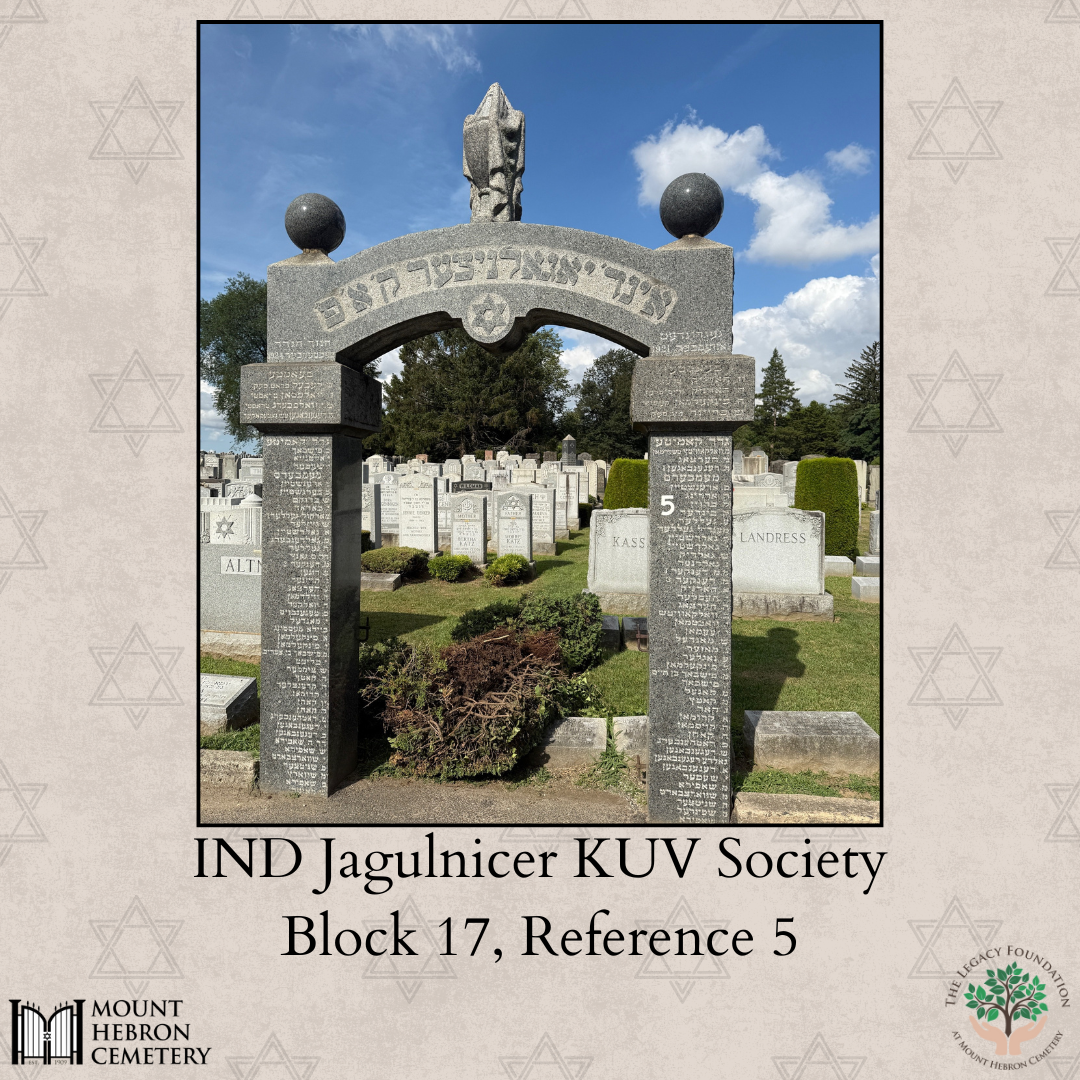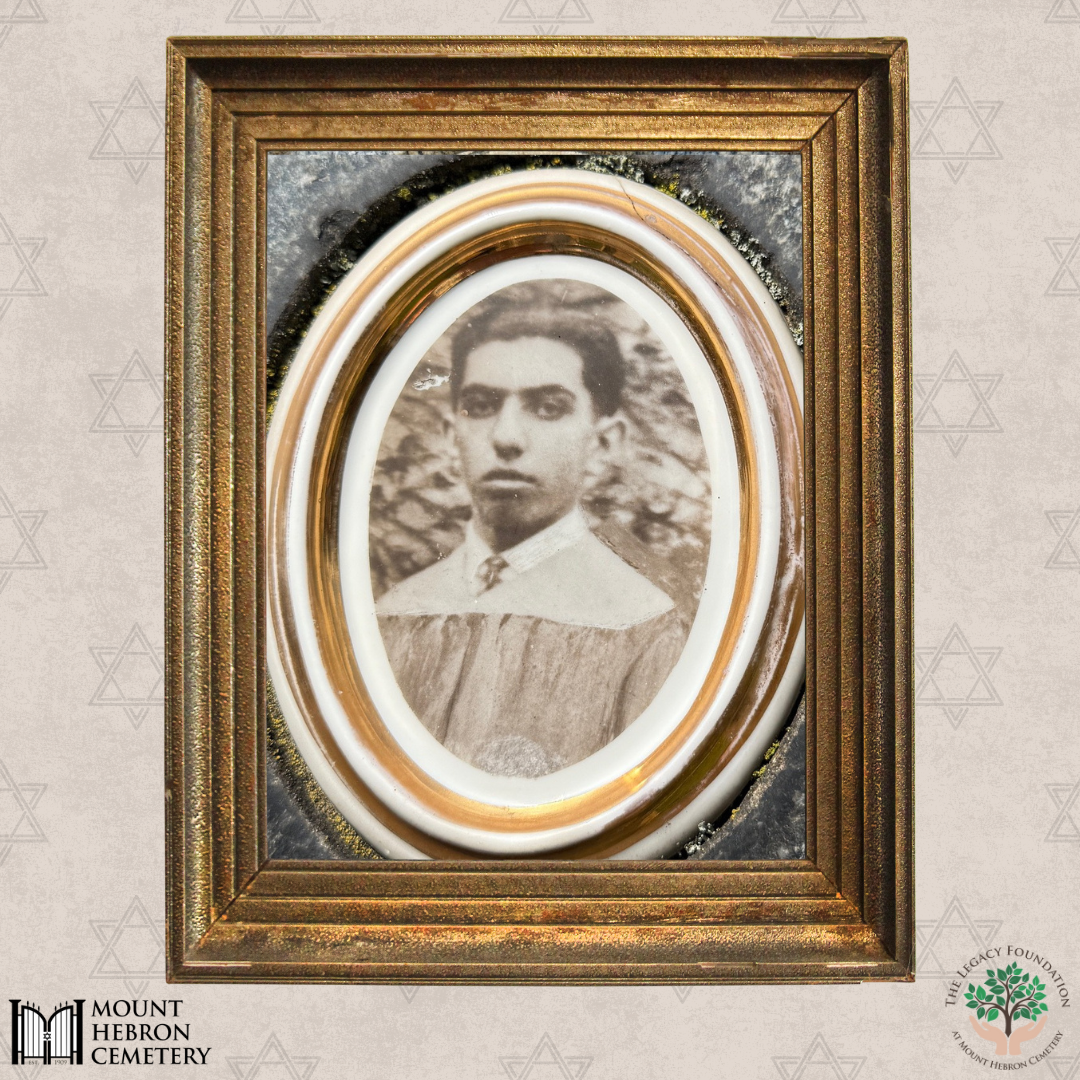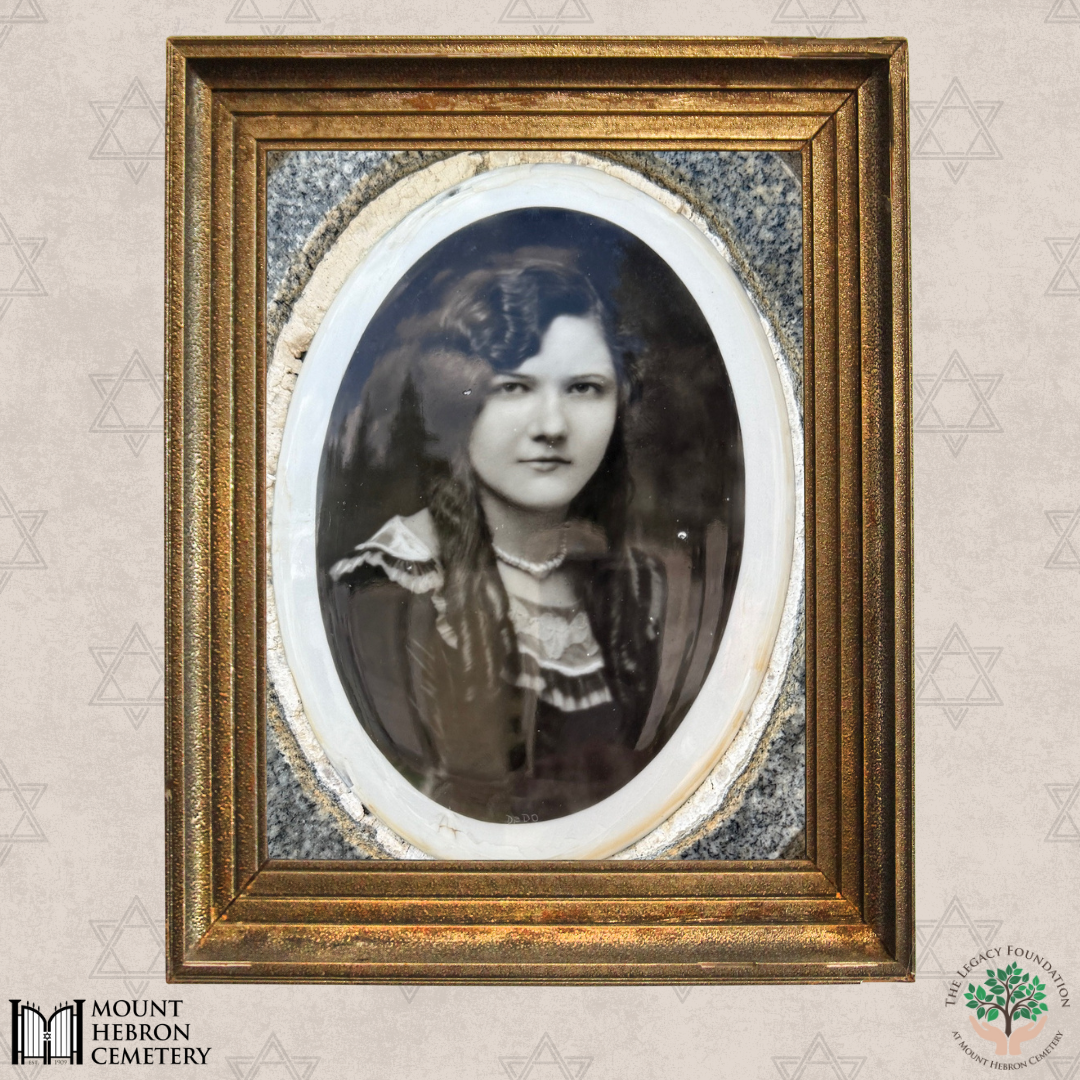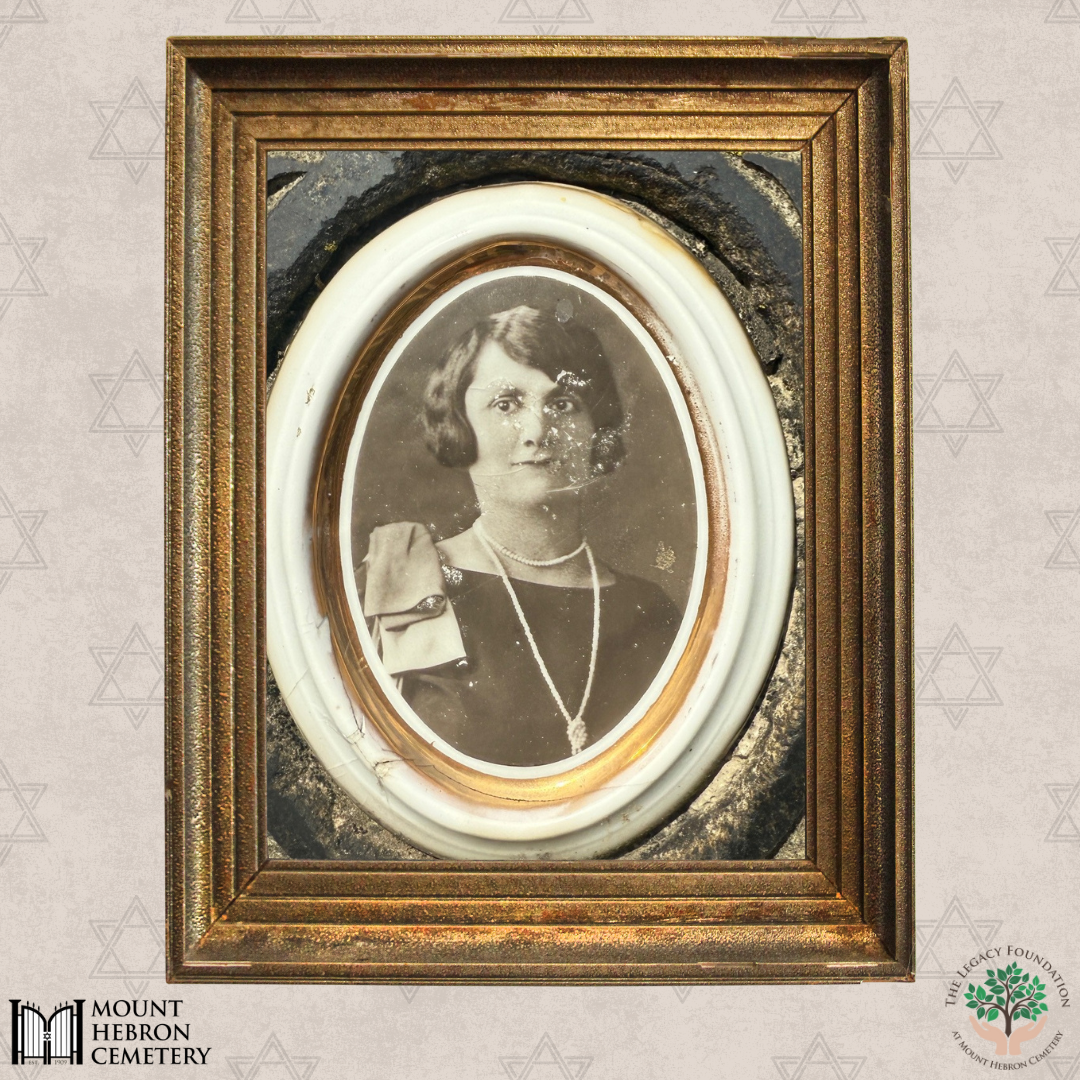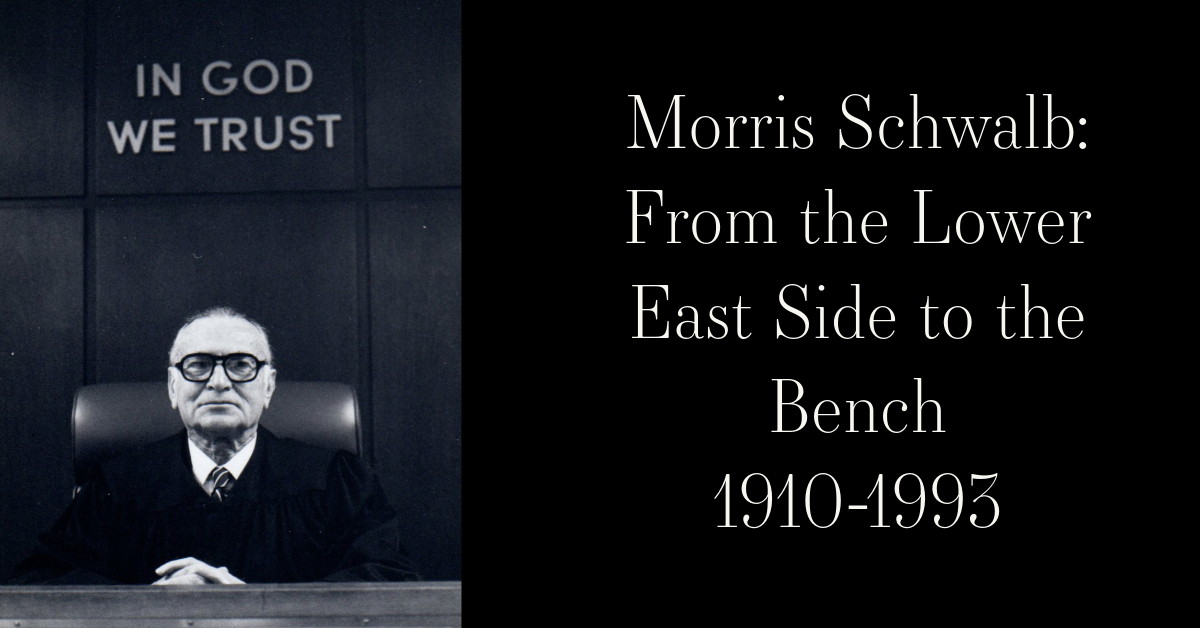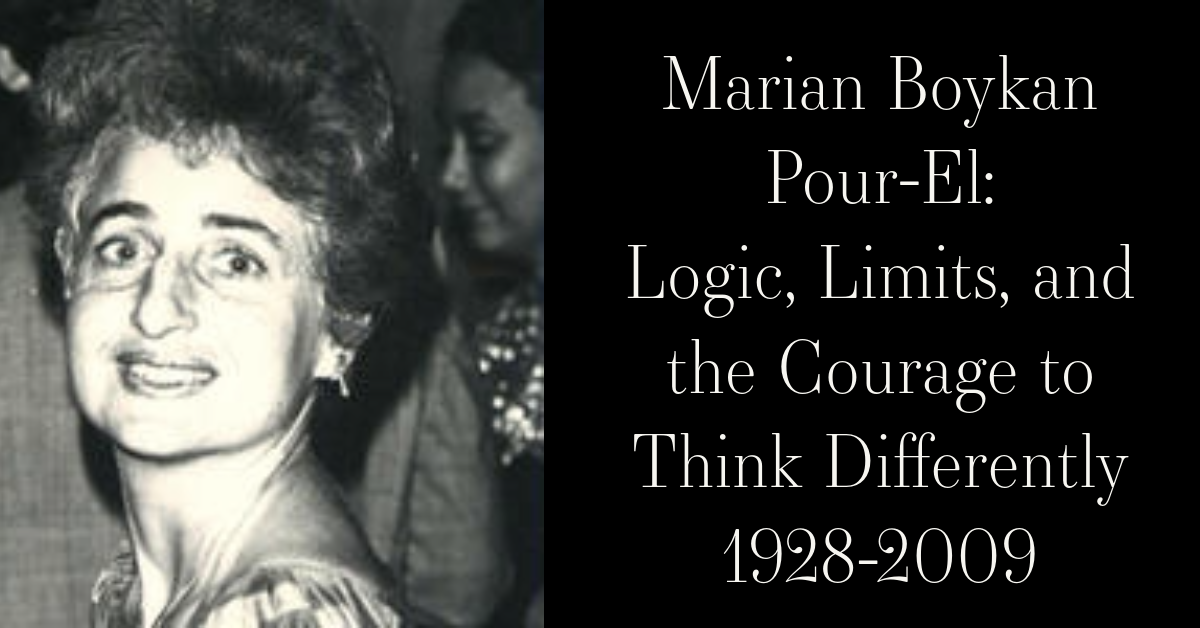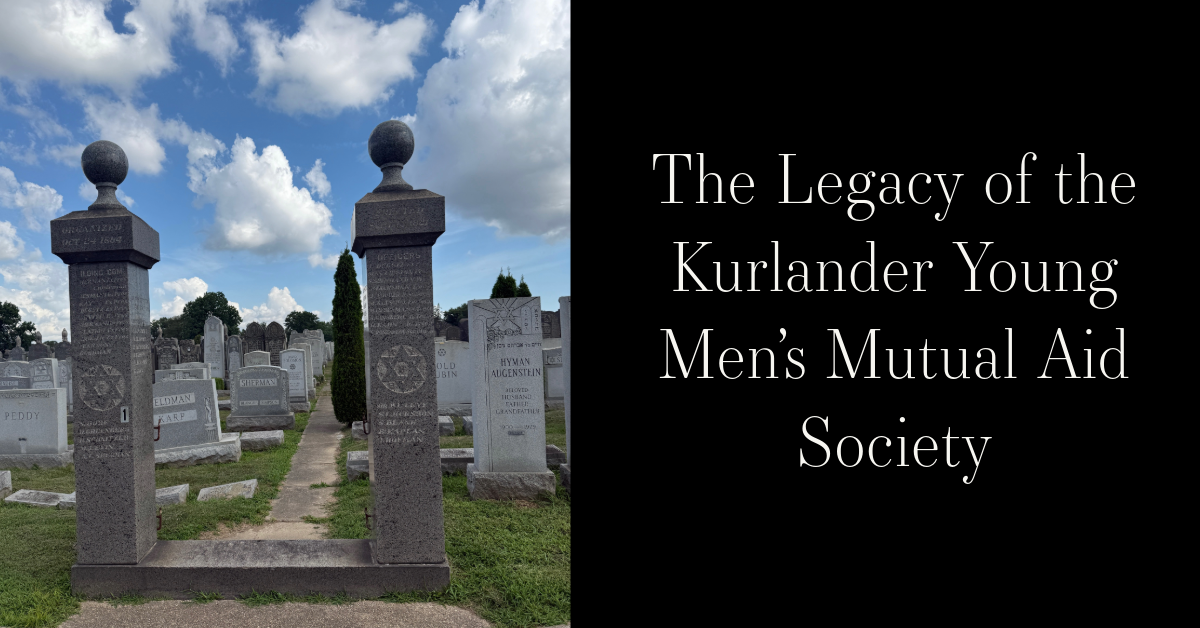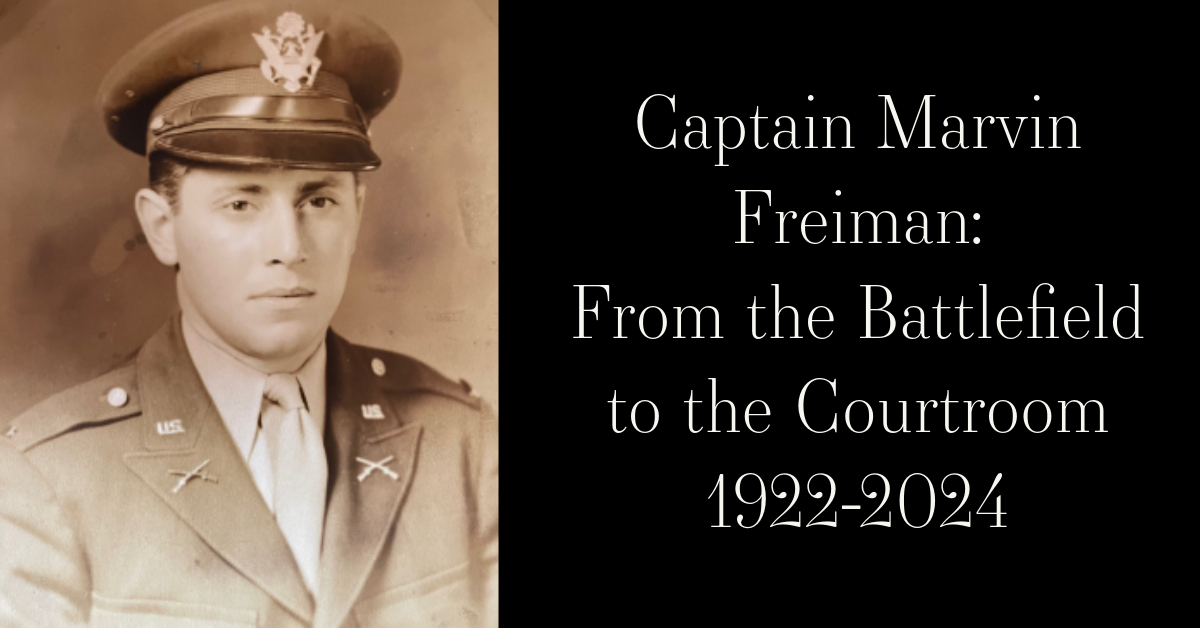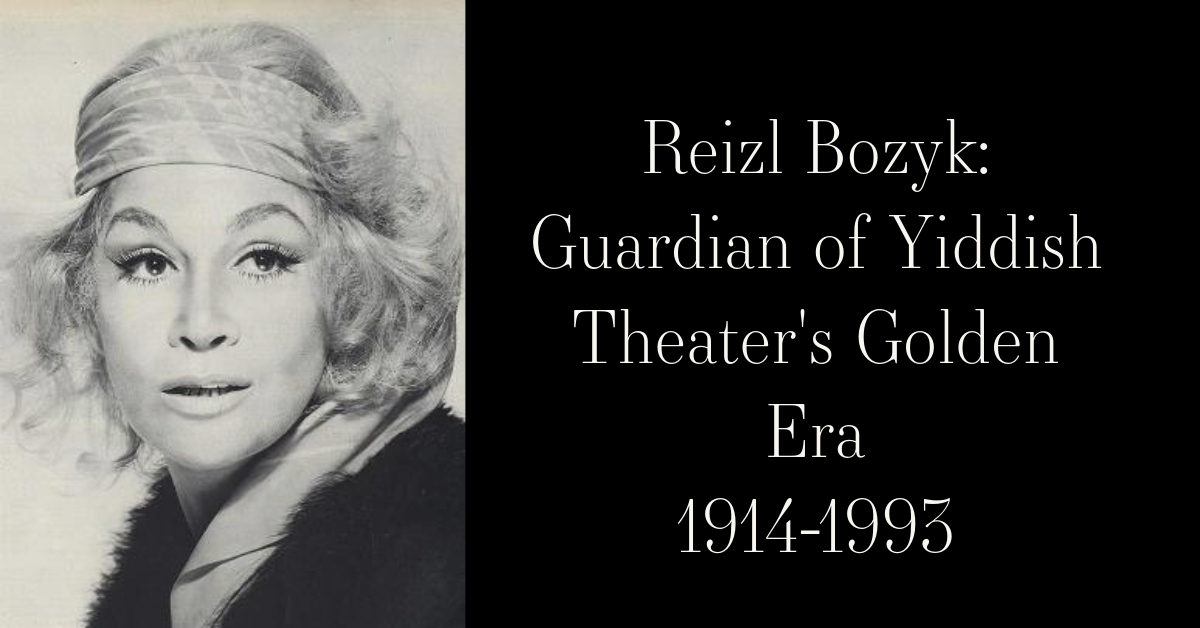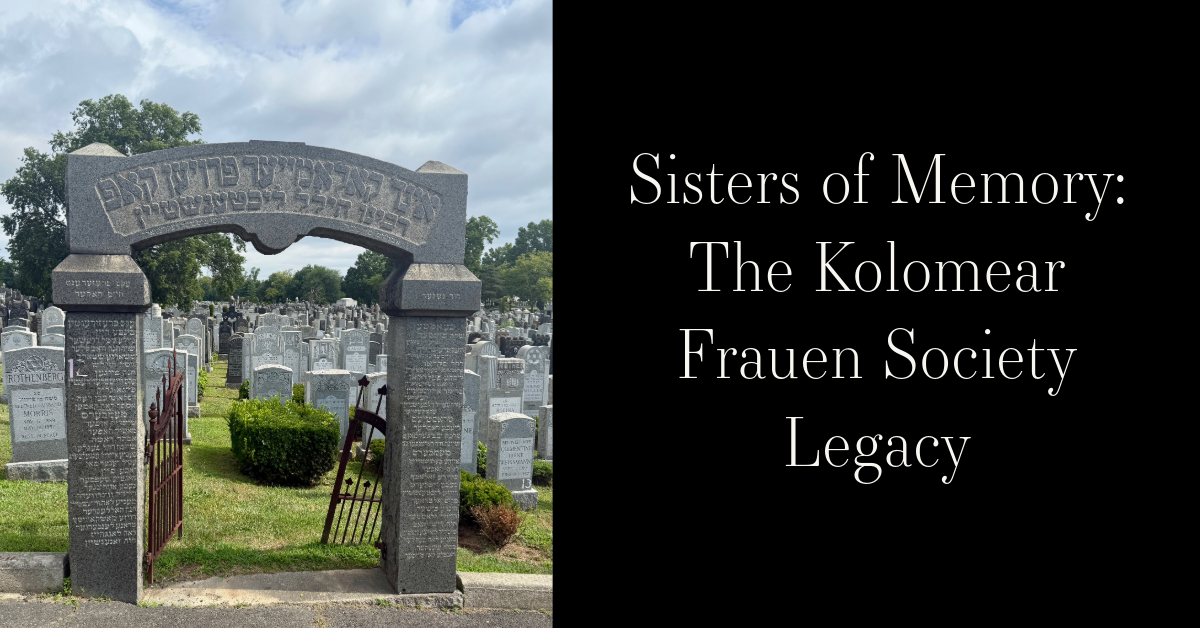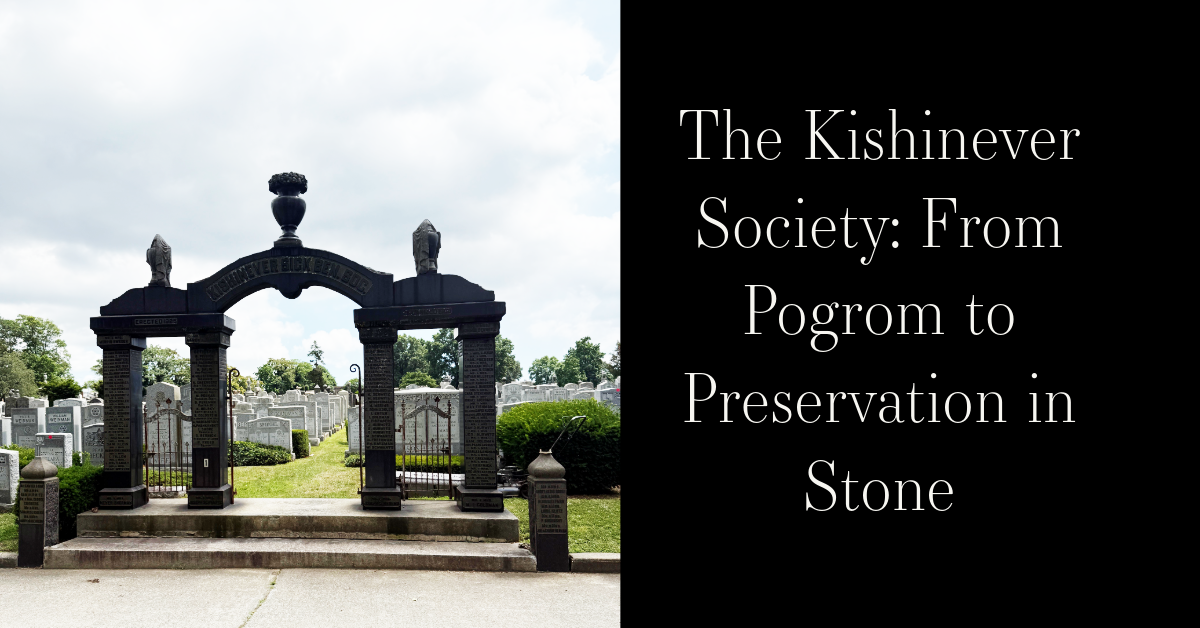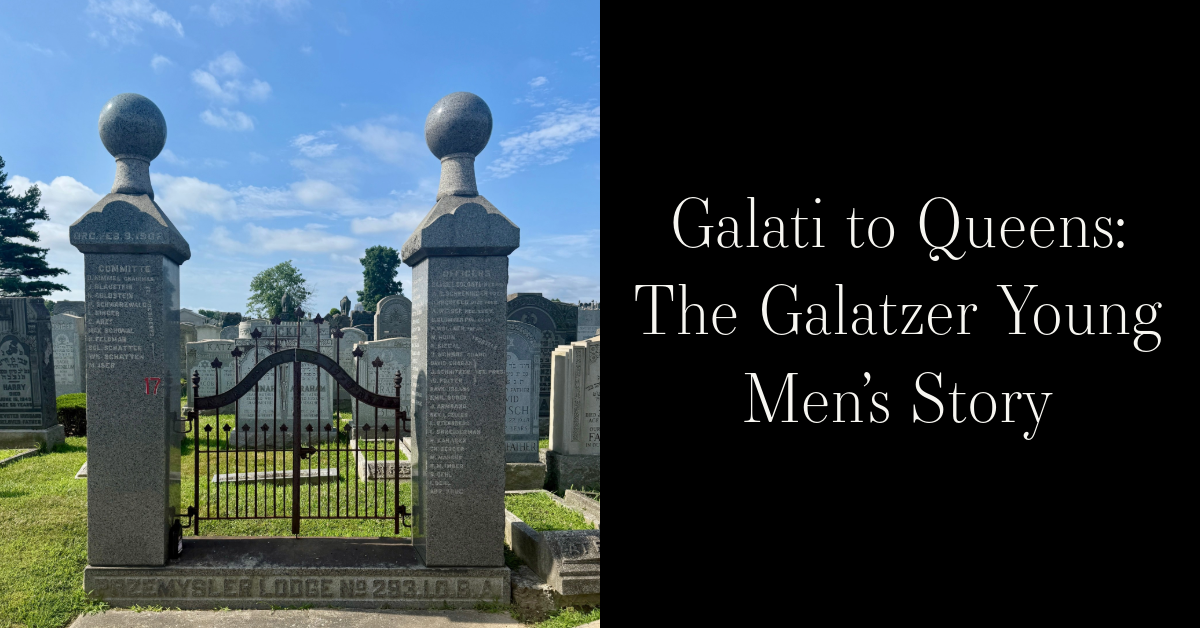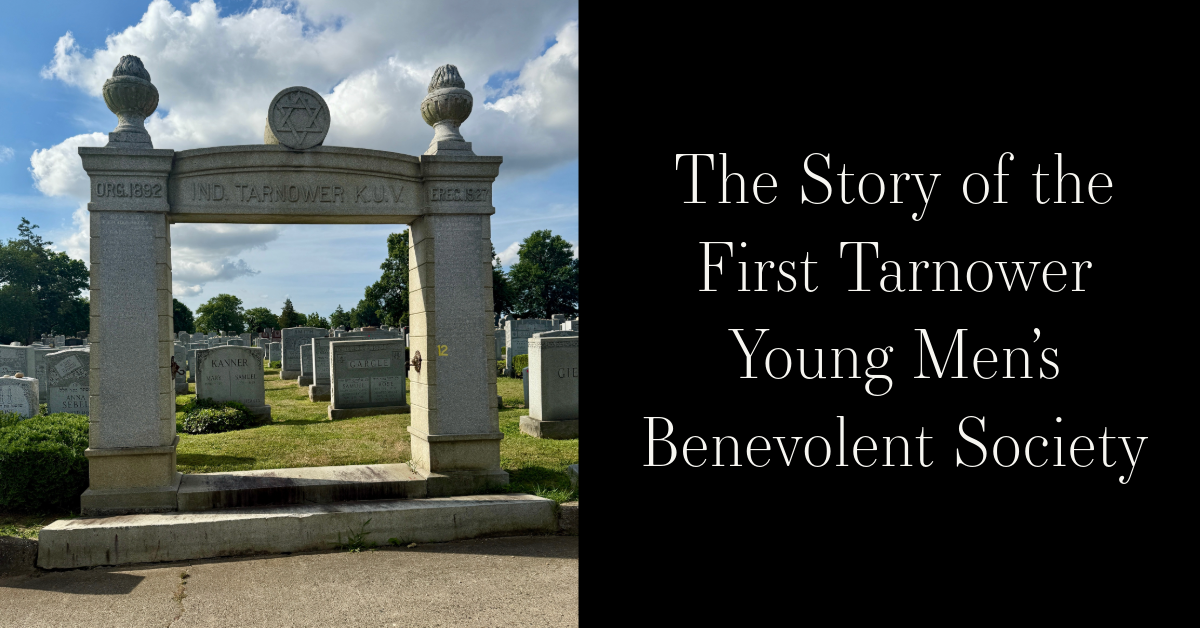Story Summary:
The Ind Jagulnicer KUV Society was a Jewish mutual aid and burial society established in New York by immigrants from Jagielnica, a once-thriving Jewish town in present-day Ukraine. Like many landsmanshaftn formed in the early 20th century, it provided financial assistance, burial arrangements, and communal support for members sharing a common origin. The society owned burial plots in cemeteries such as Mount Hebron, ensuring that members could be laid to rest among fellow townspeople. Following the destruction of Jagielnica's Jewish population during the Holocaust, the society's plot and records became a lasting memorial to the lost community and a symbol of the resilience and solidarity of Jewish immigrants who worked to preserve their heritage in a new land. ~Blog by Deirdre Mooney Poulos
Preserving Jagielnica in America:
The Story of the Independent Jagulnicer KUV Society
Among the many burial society gates found in Mount Hebron Cemetery in Queens, New York, the IND Jagulnicer KUV Society stands as a quiet but powerful reminder of the immigrant experience and the enduring ties between Jewish communities in America and their ancestral towns in Eastern Europe. This society was likely formed by Jewish immigrants from Jagielnica, a once-thriving town in what was then southeastern Poland and is now located in the Ternopil region of western Ukraine. Like hundreds of other landsmanshaftn, the IND Jagulnicer KUV Society was established to provide mutual aid, burial support, and a sense of solidarity to members who shared a common geographic origin and cultural heritage. The society’s work not only supported its members in times of illness, loss, and transition but also preserved the legacy of a town whose Jewish life was nearly erased during the Holocaust.
Jagielnica, also known as Yagelnitsa in Yiddish, had a long-established Jewish population dating back to at least the 18th century. The town fell within the boundaries of the Austro-Hungarian Empire before becoming part of interwar Poland and, later, Soviet and Ukrainian territories. Its Jewish residents were engaged in trade, crafts, religious study, and the rich cultural life typical of Eastern European shtetls. By the early 20th century, rising antisemitism, economic hardship, and limited opportunities led many families to emigrate. Those who arrived in New York sought both economic opportunity and safety from persecution. In their new communities, they formed mutual aid societies like the IND Jagulnicer KUV Society to retain a connection to their roots and to care for one another in ways the broader society often did not.
The abbreviation “KUV” stands for “Kuvutzah,” a Hebrew-Yiddish term meaning “group” or “association.” The IND Jagulnicer KUV Society likely provided its members with a wide range of services, beginning with weekly dues and extending to sick benefits, funeral arrangements, and burial in society-owned plots. These plots offered not only a resting place but also the comfort of being interred among fellow townspeople, an echo of the communal bonds from Jagielnica carried into the afterlife. Societies like this one often held regular meetings, celebrated holidays together, raised funds for members in crisis, and sometimes even sent aid back to their hometowns during times of war and upheaval. Their cemeteries became spaces of continuity and identity, with gates inscribed with the name of the town and often adorned with Hebrew phrases honoring the society’s mission.
The Jewish community of Jagielnica was largely destroyed during World War II. Under Nazi occupation, Jews were rounded up, confined to ghettos, and ultimately murdered or deported to extermination camps. Like so many small Jewish towns in Eastern Europe, Jagielnica lost nearly its entire Jewish population during the Holocaust. Today, few physical traces remain in the town itself. In this context, the IND Jagulnicer KUV Society serves as a vital link to that past. Its burial plot and historical presence in New York cemeteries are more than just final resting places. They are monuments to the lives, hopes, and traditions of a community that once flourished far away and a testament to the immigrants who carried those memories into a new world.
Even as the society itself may no longer be active, its legacy continues in the cemetery records, family genealogies, and communal memory preserved by descendants. The society’s name, etched into stone and registry books, tells the story of migration, resilience, and the enduring power of community. As researchers and families continue to explore these histories through resources such as JewishGen, Yad Vashem, and the archives of cemeteries like Mount Hebron, the story of Jagielnica and its people remains alive.
~Blog by Deirdre Mooney Poulos
Work Cited:
JewishGen Communities Database – Jagielnica: https://www.jewishgen.org/Communities/
Yad Vashem – Central Database of Shoah Victims’ Names: https://yvng.yadvashem.org
United States Holocaust Memorial Museum – Ukraine: https://encyclopedia.ushmm.org
Jewish Genealogical Society of New York – Burial Society Index: https://www.jgsny.org
New York Public Library – Jewish Landsmanshaftn Archives:
https://www.nypl.org
Find A Grave – Mount Hebron Cemetery: https://www.findagrave.com/cemetery/65403/mount-hebron-cemetery
Jewish Virtual Library – History of Jews in Ukraine: https://www.jewishvirtuallibrary.org


